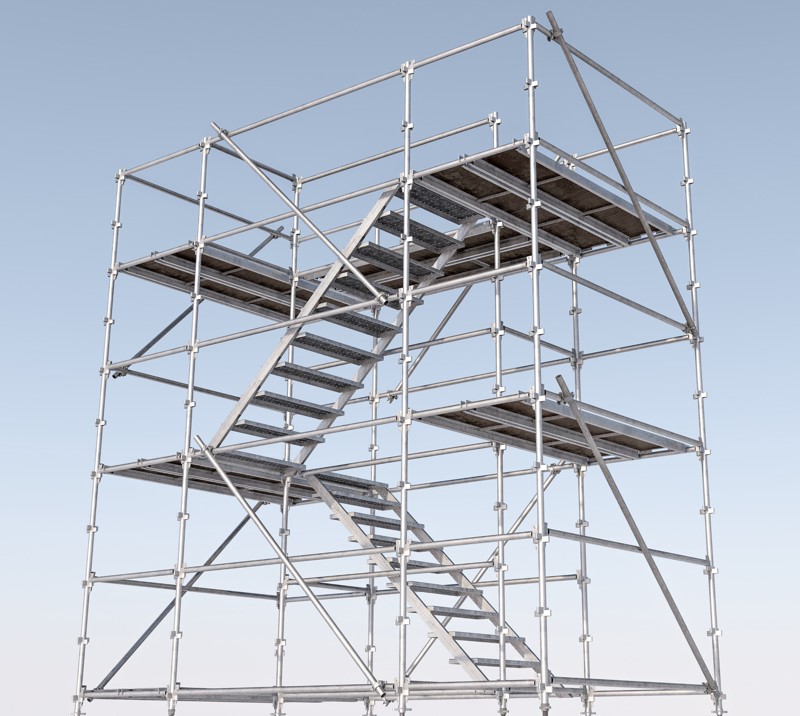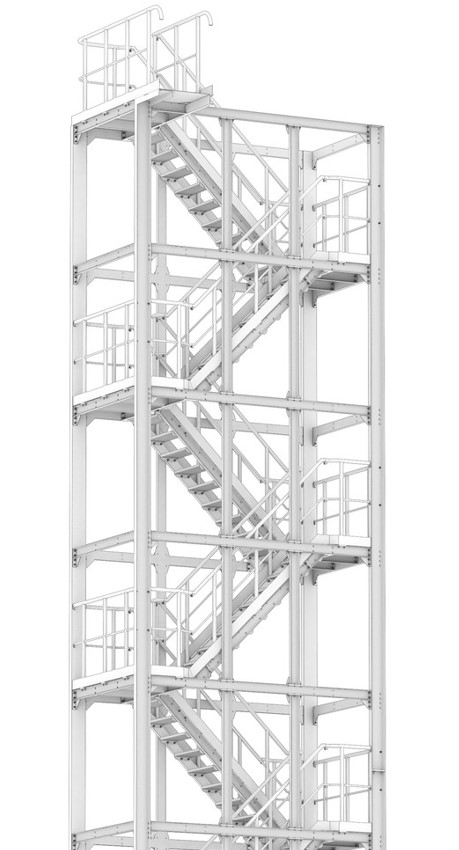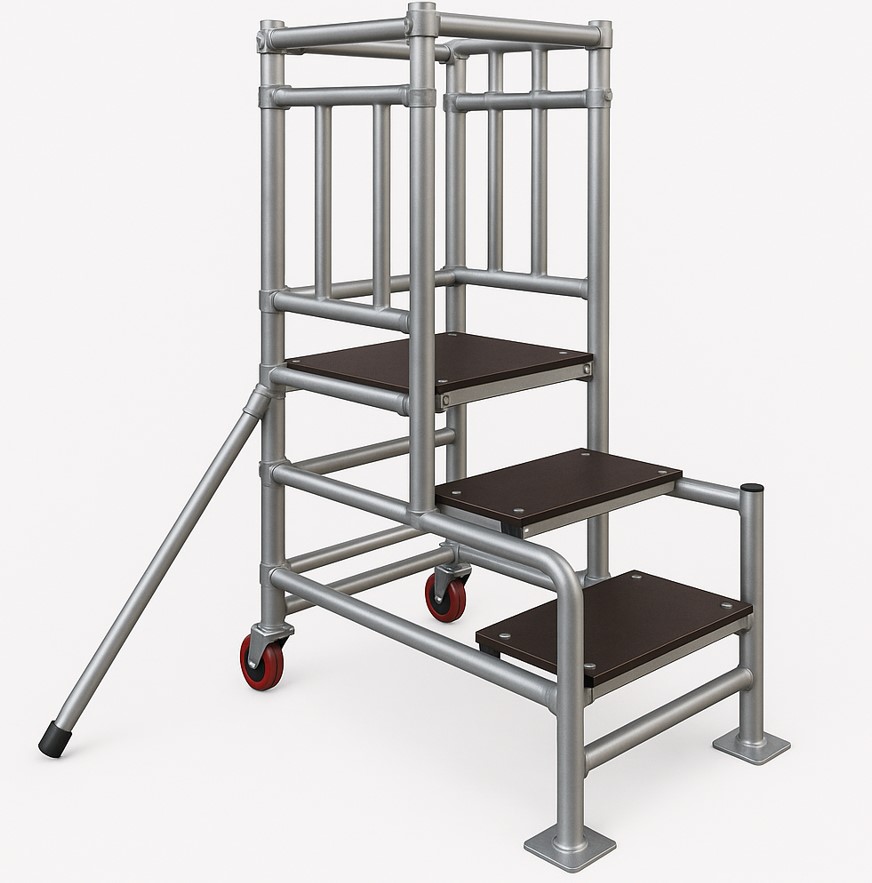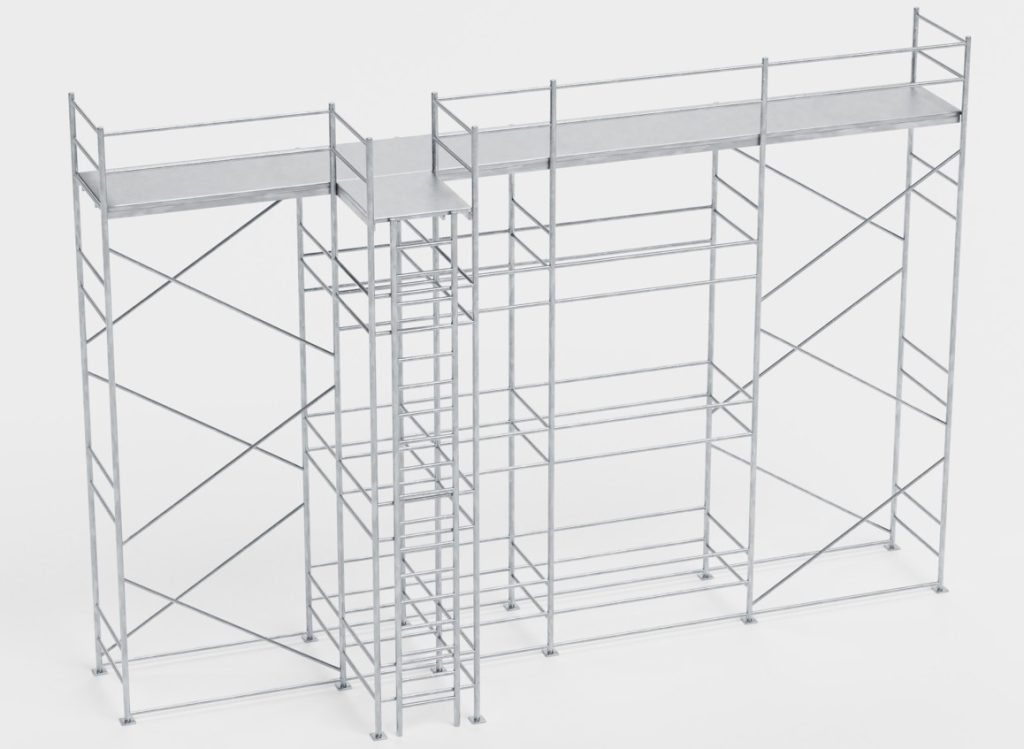Choosing the right scaffolding for a staircase can make or break a project, whether you’re a construction worker, contractor, or DIY enthusiast. Working in stairwells brings unique challenges, like uneven surfaces and tight spaces, and using the wrong equipment can compromise safety and efficiency. That’s where staircase scaffolding comes in.
At B-Mat Scaffolding, we specialise in providing top-tier scaffolding solutions for all kinds of projects, including tricky staircases. In this guide, we’ll help you understand why staircase scaffolding is the safer, smarter alternative to ladders, introduce you to the various types available, and highlight everything you need to consider when choosing the best scaffold for stairs.
By the end, you’ll be equipped with all the knowledge you need to make an informed decision for your next project.
Understanding staircase scaffolding

First, let’s cover the basics. Staircase scaffolding, also referred to as stairwell scaffolding, is a specially designed system of platforms and supports that allow you to work safely and efficiently in stairwells or on staircases. Its primary purpose is to provide a stable and elevated working area on sloping surfaces or areas with a lack of level ground.
Why is staircase scaffolding safer than ladders?
Staircases are inherently uneven, making ladders unstable and risky. Staircase scaffolding eliminates this issue by creating an even, secure platform for a variety of tasks, such as painting, repairs, or construction installations. Key safety advantages include:
- Greater stability: Scaffolding has adjustable features to accommodate uneven surfaces.
- Increased safety: Most scaffolding systems include anti-slip materials and climb frame supports to reduce fall hazards.
- Hands-free access: Unlike ladders, scaffolding lets you carry tools and supplies up safely.
Types of staircase scaffolding
There are a few popular types of scaffolding for stairs to consider, each suited to different needs. Here’s a breakdown of the main options:
Stair scaffold towers

Stair scaffold towers are freestanding structures designed for staircases. They are stable, the platform height is adjustable and they are easy to move around, which makes them perfect for tasks like ceiling repairs and painting.
Benefits of stair scaffold towers:
- Stability: These towers are built with wide bases for extra security.
- Ease of use: Quick assembly and disassembly mean less downtime on your project.
- Flexible height options: Adjustable working platform boards makes it easy to reach varying heights.
If you’re working on larger projects or need maximum stability, scaffold towers might be your best bet.
Podium steps

Podium steps are a compact and highly portable option for working at lower heights within stairwells. While they don’t offer the same reach as towers, their adjustability and ease of use make them ideal for tasks like detailed painting or wiring work.
Benefits of podium steps:
- Versatility: Perfect for tight spaces where larger scaffolding might not fit.
- Platform adjustability: Easily adjustable to different step heights.
- Compact design: Lightweight and foldable for easier transportation.
Customisable scaffolding systems

For unique projects or unconventional stairwell designs, a customisable scaffolding system could be the way to go. Systems with interchangeable parts and adjustable features can accommodate unusual dimensions or specific needs for construction sites.
Key considerations when choosing staircase scaffolding
Now that you know the main types of stairwell scaffold, it’s time to think through the details.
Here are the most important factors to consider:
Safety standards
Safety should always come first. Look for scaffolding certified to meet BSEN1004 standards, which guarantee compliance with UK regulations. High-quality products with these certifications will provide peace of mind, as they’ve been rigorously tested for safe access and stability.
Stability and load capacity
An unstable scaffold can lead to accidents, while an overloaded one may collapse. Check the load capacity of your chosen scaffolding to ensure it can safely bear the weight of workers, tools, and materials.
Tips for assessing stability:
- Opt for scaffolding with locking wheels to prevent rolling.
- Look for adjustable legs to level the scaffold on uneven surfaces.
Ease of assembly and use
A complicated set-up process can frustrate workers and waste time. Consider scaffolding systems designed with easy-to-follow instructions and user-friendly assembly mechanisms. Quick assembly means you can start your project faster and finish more efficiently.
Space and accessibility
Stairwells often have limited space, and choosing scaffolding that fits this constraint is essential. Measure the dimensions of the stairwell and assess any obstacles (like railings or wall inclines) before deciding on a scaffolding system.
Frequently asked questions
Can staircase scaffolding be used outdoors?
Yes, many staircase scaffolding systems are suitable for outdoor use. However, ensure they’re built with weather-resistant materials like aluminium or galvanised steel if they’ll be exposed to the elements.
How do I maintain my scaffolding?
Regular maintenance can prolong the life of your scaffolding. Make sure to:
- Inspect for signs of wear or damage before use.
- Clean regularly, especially after outdoor use.
- Lubricate moving parts like wheels and joints as needed.
Can I modify scaffolding to fit unusual or tight spaces?
Many systems offer modular or adjustable components, making it easier to customise them for unique layouts. Contact a specialist (like B-Mat Scaffolding) for assistance with customisation.
Is staircase scaffolding or tower hire better for landing areas?
It ultimately depends on the specific needs of your project and the space available. Staircase scaffolding may be more suitable for smaller landing areas, as it provides a compact and stable platform.
Tower hire, on the other hand, may be a better option for larger spaces or when you need to reach higher levels. Consider consulting with a professional to determine which option would be best for your specific situation.
Additionally, always ensure that any modifications made to scaffolding follow all safety regulations and are approved by a qualified engineer or scaffolding specialist. Safety should always be the top priority when working with scaffolding in any setting.
Why choosing the right staircase scaffolding matters
Selecting the right staircase scaffolding isn’t just about convenience; it’s about ensuring safety, efficiency, and completing your project to the highest standard. Whether it’s a stair scaffold tower, podium steps, or a customisable option, the best scaffolding is the one that matches your unique job requirements.
Reach out now to learn more about our range of professional scaffolding solutions!
At B-Mat Scaffolding, we pride ourselves on providing expert guidance and access to top-quality scaffolding systems. With our experience in the industry, we’re confident we can help you find the perfect solution for your project. Whether you’re a contractor tackling a renovation or a DIY enthusiast painting a stairwell, we’ve got you covered.
Contact us today for expert advice and a free quote. Our team is here to help you work smarter, safer, and better.


